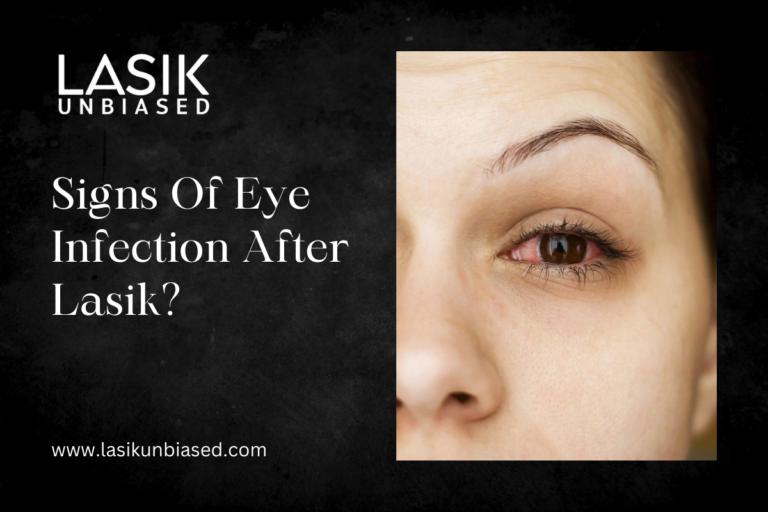LASIK surgery has transformed vision correction by providing a safe and effective alternative to glasses and contact lenses. Most individuals experience smooth recovery with improved eyesight within a few days. However, complications such as infections can occasionally arise. Recognizing the signs of an eye infection after LASIK ensures timely intervention and prevents serious complications.
Redness and Irritation That Persist
Mild redness and irritation are common after LASIK but should subside within a few days. If the redness persists or worsens, it may indicate an infection. Inflamed blood vessels in the eye and discomfort suggest that the eye is reacting to bacteria or other pathogens. Severe irritation that does not improve despite using prescribed eye drops requires immediate attention from an ophthalmologist.
Increased Sensitivity to Light
Temporary light sensitivity is normal after LASIK, but extreme or worsening sensitivity can indicate an underlying infection. The eye may struggle to heal appropriately if bright lights cause discomfort or pain beyond the initial recovery period. This symptom often accompanies other signs such as redness, excessive tearing, and blurred vision. Consulting a doctor at the first sign of increased light sensitivity helps prevent complications.
Unusual Eye Discharge
A small amount of watery discharge is expected in the days following LASIK. However, thick, yellow, green, or pus-like discharge is not normal and may indicate an infection. If the eyelids stick together or there is a crusty buildup around the eyes, medical intervention becomes necessary. Prompt treatment prevents the disease from worsening and ensures a smooth recovery process.
Blurred or Diminished Vision
LASIK provides clearer vision almost immediately, with minor fluctuations during the healing process. However, if vision becomes increasingly blurry or worsens over time, instead of improving, it may signal an infection. Persistent haziness, difficulty focusing, or a sudden decline in vision clarity require urgent evaluation to rule out bacterial or fungal infections.
Eye Pain and Discomfort Beyond Normal Healing
Some discomfort is expected after LASIK, but severe or increasing pain should not be ignored. An infection often causes intense pain that does not improve with prescribed eye drops or pain relievers. If the eyes feel swollen, sore, or tender to the touch, it is crucial to seek medical help. Early treatment can prevent long-term complications and ensure proper healing.
Excessive Tearing and Watery Eyes
Tear production may fluctuate after LASIK, but excessive tearing and irritation can indicate infection. Medical evaluation becomes essential if the eyes continue to water uncontrollably, especially with other symptoms like redness and pain. Proper diagnosis and treatment ensure that the infection does not interfere with recovery.
Swelling Around the Eyes
Mild swelling is expected in the initial days following surgery, but excessive or prolonged swelling suggests inflammation or infection. Puffy eyelids or noticeable swelling in the eye tissues can indicate a bacterial or viral infection. Cold compresses may provide temporary relief, but professional medical guidance is necessary to determine the cause and administer appropriate treatment.
Fever and General Discomfort
An eye infection may sometimes trigger a systemic response, leading to fever and discomfort. The disease may have spread if flu-like symptoms develop alongside eye redness, pain, and discharge. Seeking immediate medical attention prevents the condition from worsening and ensures a swift recovery.
Preventing Eye Infections After LASIK
While infections after LASIK are rare, following post-operative care instructions minimizes the risk. Keeping the eyes clean, using prescribed antibiotic eye drops, and avoiding contaminated water sources help protect against infections. Wearing protective eyewear, avoiding eye rubbing, and maintaining proper hygiene contribute to a smooth healing process.
When to Seek Medical Attention
Recognizing the signs of an eye infection and seeking medical help without delay prevent complications. If symptoms such as persistent pain, vision changes, unusual discharge, or extreme redness develop, consulting an eye specialist ensures timely treatment. Prompt intervention with antibiotics or antifungal medication prevents long-term damage and restores eye health.
LASIK provides remarkable vision correction results when followed by proper post-operative care. Monitoring for signs of infection and taking immediate action at the first indication of a problem ensures a safe and successful recovery.
The Importance of Early Detection
Eye infections after LASIK are uncommon, but when they occur, early detection plays a crucial role in successful treatment. The eyes heal rapidly following surgery, so infections can progress quickly if left untreated. Understanding the difference between normal healing discomfort and signs of infection ensures prompt medical intervention. Patients should monitor their symptoms closely and promptly report any abnormal changes to their eye doctor.
How LASIK Can Make the Eyes More Vulnerable
During LASIK, the surgeon creates a corneal flap to reshape the eye’s surface, temporarily disrupting the eye’s natural protective barrier. While this flap heals quickly, it remains susceptible to bacteria, fungi, and other pathogens in the early recovery. Even minor exposure to contaminants can increase the risk of infection if proper hygiene is not maintained. Using prescribed antibiotic drops, keeping hands clean, and avoiding environments with excessive dust or smoke help reduce this risk significantly.
The Role of Proper Post-Surgery Care
Strict adherence to post-operative care instructions is essential for preventing infections. Patients should avoid rubbing their eyes, swimming in pools or hot tubs, and exposing their eyes to unclean surfaces. Wearing protective eyewear, especially while sleeping, prevents accidental irritation. Keeping all follow-up appointments with the eye surgeon ensures the healing process is monitored, allowing for early detection of abnormalities.
Common Bacteria and Pathogens Responsible for Infections
Several bacteria and fungi can cause post-LASIK infections, with some being more aggressive than others. Staphylococcus aureus and Pseudomonas aeruginosa are among the most common bacterial culprits. Fungal infections, though rare, can also develop if the eyes are exposed to contaminated water or unsanitary conditions. Identifying the specific pathogen through lab tests allows doctors to prescribe targeted antibiotics or antifungal treatments for adequate recovery.
Long-Term Effects of Untreated Infections
If left untreated, an eye infection after LASIK can lead to serious complications, including corneal scarring, prolonged vision impairment, or even vision loss in severe cases. Chronic inflammation and delayed healing may also occur, requiring additional medical procedures. Seeking immediate treatment at the first sign of infection prevents these long-term consequences and ensures a smooth recovery.
Ensuring a Safe and Successful Recovery
By recognizing the warning signs of an infection and taking preventive measures, LASIK patients can enjoy a smooth recovery with optimal vision outcomes. Maintaining good hygiene, following medical advice, and addressing symptoms early all contribute to a positive healing experience.


